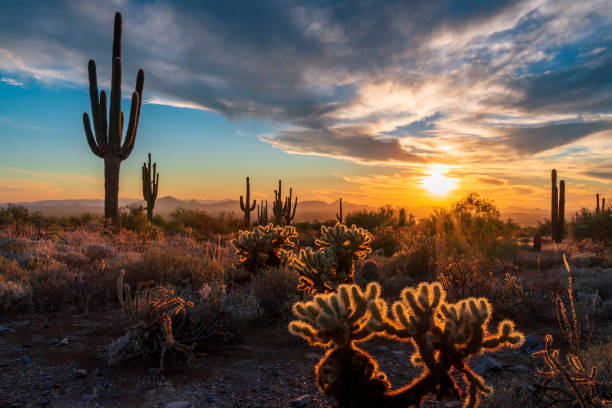
Photo Credit: Eric Mischke
RMRM 2021 was held October 20 – 23, 2021. These dates were selected based on having the regional meeting closing day on Mole Day. This date did not conflict with any other big events in Tucson. October weather in Tucson, Arizona, is typically clear, dry, and beautiful with highs in the 80’s and lows in the high 50’s. This was an ideal time to be in Tucson. With the meeting taking place during the active SARS CoV-2 pandemic, the actual format of the meeting was an open question, even up to the weeks prior to Oct 20, 2021. In the end, the meeting was held as a hybrid meeting with both in person and virtual components to it. Most presenters selected in person over virtual, with approximately 75% of registered attendees in person and the remainder as virtual.
The theme of “Diverse Chemistry in a Diverse Region” was chosen not only to represent the wide variety of chemistry in the region, but also the diverse population of chemists practicing in the region. The General and Program Chairs wove diversity and inclusion throughout the meeting. Examples from the Technical Program included Quimica, a Spanish language session with presenters and attendees from Puerto Rico, Sonora Mexico and elsewhere; Black Chemists Toward a Brighter Future, a full day session coordinated with NOBCChE; an “Indigenous Ways of Knowing” session; and A Panel Discussion on Diversity in the Chemical Sciences followed by a keynote address on Better Chemistry Through Diversity. The Local Organizing Committee (LOC) established a goal of funding student registrations to the meeting through donations from individuals and sponsors, managing to raise enough funds to support over 400 potential student registrations.
Attendance at RMRM 2021 represented a broad cross-section of the chemical research community with attendees from industry, academia, government, and education, with a variety of educational backgrounds including high school students, college students, graduate students, teachers, professors, technicians, researchers and clinicians. Diversity was represented by the geographic locations of participants, with attendees from many of the continental states, the Rocky Mountain and Western regions as well as international attendees from six international countries. The hybrid format proved to be yet another factor in the diversity and inclusion seen at RMRM 2021. The ACS final report showed 490 registrants for the meeting. In addition to attendees, RMRM 2021 proved attractive for sponsors and exhibitors for which the meeting represented their first return to a live exposition since early 2020 RMRM 2021 provided a healthy background for educational and professional development activities as seen in both the quality and the registration numbers for the workshops and education related symposia.
The final report for RMRM 2021
